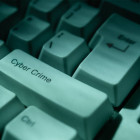
Law Enforcement Learns the ‘Social Media Beat’
|
It’s no secret: Social media has redefined the way people communicate, especially among the under-30 crowd. Now, law enforcement agencies are catching on and increasingly incorporating social media into their arsenal of crime-fighting tools.
Over the past few months a series of high profile social-media-turned-criminal acts have made headlines -- from flash mobs turned violent on the streets of Philadelphia to Atlanta house parties taped off as homicide scenes -- and law enforcement has taken note.
Some agencies have been quick to recognize the potential of embracing social media. The Department of Homeland Security, for example, has run a “Social Media Monitoring Center” since early 2009; Correction officials in California have worked directly with Facebook to thwart inmates from accessing social profiles while behind bars; And police in New York formed a special unit to monitor social channels for gang-related and other potential criminal acts.
